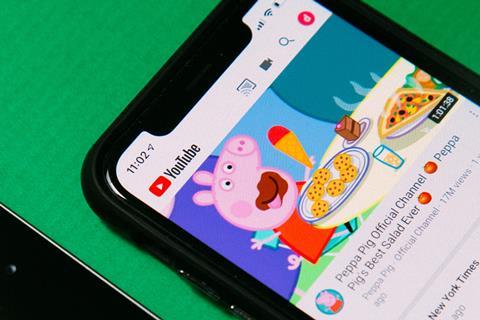Becky May allows her children to access YouTube, but has some approaches to maximise the good and minimise the bad.

There is a brilliant saying, “as soon as you say ‘my child will never,’ here they come nevering like they never nevered before!”
I thought we had successfully avoided the YouTube trap. I knew I had been nevered by my child when I found them watching a film of a car wheel running over an infinite number of random objects to see what would happen; tubes of paint, aerosol cans, small plastic toys, small teddy bears, felt tip pens, pots of slime… you get the gist.
Here’s the thing; YouTube is not inherently bad. In fact, as a teacher, children’s worker, hobby sewist and amateur plumber who refuses to give up when the washing machine or boiler stop working, I have found many high quality, useful, creative and professional clips to use which have entertained and educated me and those in my care. So instead of writing it off or demonising it, how can we have, and help our children to have a healthy relationship with YouTube and other similar online services. (See an article on Instagram here).
1) Set before my eyes no vile thing.
Of course, King David would never have imagined the things our children have access to when he wrote his pledge in Psalm 101, but I remember Ishmael applying this principle in ‘The TV song’ (available on ‘Worship songs for little children). “Lord be in my mind, be in my eyes, especially when I watch TV, help me to know what’s right and wrong and switch off the things I shouldn’t see.” This has been a great tool for us when we have helped to teach our children to put their own boundaries in place to decide what they should and shouldn’t watch. As responsible parents, we will have safeguards in place to protect our children from seeing the vast majority of age-inappropriate content, but there may well come a time when the filters fail, or where our own Christian parameters are different to those offered by the software. Talking honestly and openly with our children about why we protect our eyes and minds and then giving them tools to do so, without a culture of judgement is really important. Of course, the minute we ban our children from seeing something, we make it like the forbidden fruit they want to seek after, far better to give them tools and understanding to put up the boundaries and protect themselves.
2) It’s a matter of time
Who of us haven’t been disturbed wiling away the hours watching inane clips? This is not just a matter for the children! The truth is, it can be addictive, and the reason for that is that we find it relaxing; it serves a need, to switch off from reality. Again, we need to have honest conversations with our children about this, let them know that we get it! But help them to set parameters too. I’m only going to sit here for xx mins. I’m going to set an alarm so I get up and do something else. I’m going to think about whether there is something better I could be watching or doing right now. I’m not going to watch anything after I’ve had my dinner at night, etc. Model the parameters to your children so that they can see that we are people who do as we say, and show them other ways you relax too, helping them to find their own off-screen hobbies.
3) Celebrate the good finds
When you, or your child finds a good clip, share it together, talk about why you appreciate it and congratulate them for good habits developed. It may be a useful clip to help with a school project, a daily devotional or new Christian band they have discovered. Help to celebrate and enjoy the good stuff, to avoid demonising the platform.
4) To be (a YouTuber) or not to be?
In lockdown, a parent-friend invited us to ‘like’ her son’s new YouTube channel. I ’nevered’ my way through a couple more months until I involved my own children in the online Messy Church online Messtival of 2020, and web based church, and many other projects we were invited to be a part of! Of course, in that period, our reality was rather different from now, and we may make different decisions now, but we do need to think carefully about what we involve our children with, when creating online content. Generally speaking, it is helpful to think about how our children feel about it both now, and how they will feel about it ten years from now. Once broadcast, it’s out there for all to see. Again, this is not necessarily a bad thing, but it is something for us to bear in mind. We do have a responsibility to protect our children and to think about what they are allowed to do for themselves. If our children want to play at creating YouTube content for themselves, perhaps we should think about letting them play at it (offline) for a while, before we consider encouraging them to go online for themselves.
As you think about YouTube, what have you found helpful? What challenges have you and your children faced over this? The technology and trends will change, but the principles remain the same; teaching these to our children gives them healthy parameters in which to experiment and explore.

Sophia the First: friendship, loyalty, gender expectations - why Christian parents need to be alert to this long-running animation
When your parenting journey isn’t what you expect
‘If you think you have ruined God’s plans, don’t worry, you are not that powerful!’ How to support your teen's decision making






























